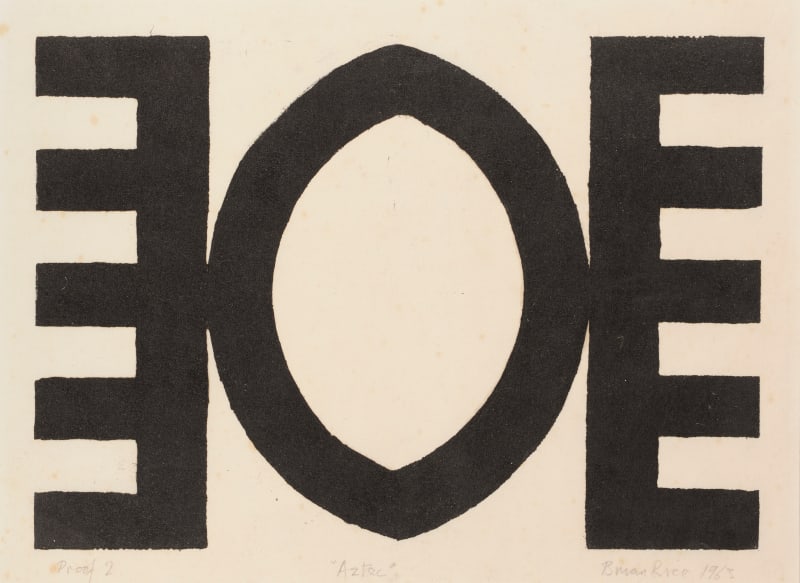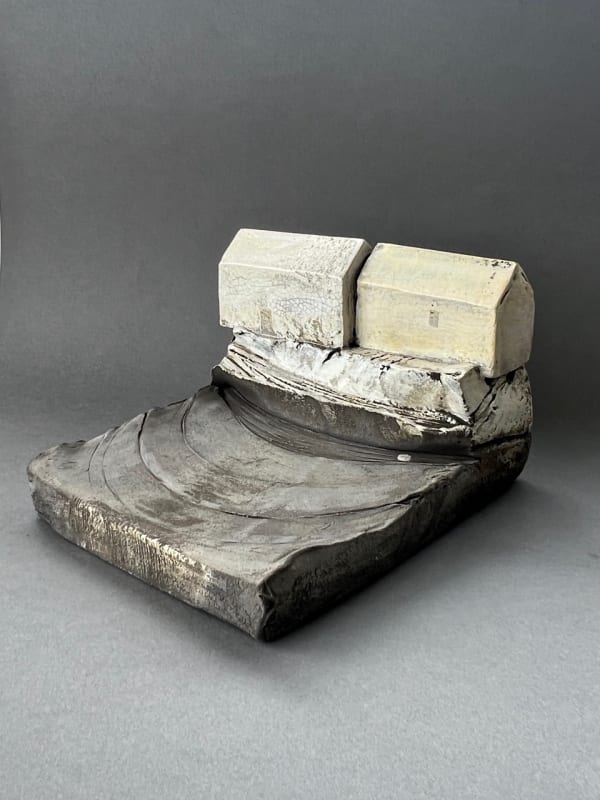Brian Rice
Overview
Brian Rice (born 1936) is a British abstract artist associated with the pop art movement who has had 35 solo exhibitions and around 200 group exhibitions.
Brian studied at Yeovil School of Art where he learned about printmaking and for a year Goldsmiths College. During the 1960s he was at the heart of the London art scene where he moved in the same circles as Peter Blake, David Hockney and Joe Tilson, and worked at the forefront of British Modernism.
This was a time when the art world was being transformed. London emerged as a new global centre for making and selling art. Commercialisation increased, many more galleries opened and there was a boom in printmaking. His screenprint Red Assembly which was exhibited in 1964 and acquired by the Tate Gallery for its permanent collection.
During the 1970's Brian became disillusioned with London life and he returned to his native West Country, buying a 50-acre farm in Dorset, immersing himself in the work of sheep farming, restoring the ancient farmhouse and creating a studio space. His only contact with other artists was through teaching at Brighton Polytechnic.
Brian returned to painting in the 1980s and by the early 1990s was developing a new visual language. He sought inspiration from the archaeological past and from the hill forts, enclosures and burial mounds in the landscapes around him. Soon he was renewing his reputation as one of Britain's most distinguished abstract artists.
Brian was chairman of the Printmakers Council of Great Britain 1974 - 1977. He has a number of works in the collection of Tate Modern.
Works
Exhibitions
Store
Biography
Brian Rice (born 1936) is a British abstract artist associated with the pop art movement who has had 35 solo exhibitions and around 200 group exhibitions.
Brian studied at Yeovil School of Art where he learned about printmaking and for a year Goldsmiths College. During the 1960s he was at the heart of the London art scene where he moved in the same circles as Peter Blake, David Hockney and Joe Tilson, and worked at the forefront of British Modernism.
This was a time when the art world was being transformed. London emerged as a new global centre for making and selling art. Commercialisation increased, many more galleries opened and there was a boom in printmaking. His screenprint Red Assembly which was exhibited in 1964 and acquired by the Tate Gallery for its permanent collection.
During the 1970's Brian became disillusioned with London life and he returned to his native West Country, buying a 50-acre farm in Dorset, immersing himself in the work of sheep farming, restoring the ancient farmhouse and creating a studio space. His only contact with other artists was through teaching at Brighton Polytechnic.
Brian returned to painting in the 1980s and by the early 1990s was developing a new visual language. He sought inspiration from the archaeological past and from the hill forts, enclosures and burial mounds in the landscapes around him. Soon he was renewing his reputation as one of Britain's most distinguished abstract artists.
Brian was chairman of the Printmakers Council of Great Britain 1974 - 1977. He has a number of works in the collection of Tate Modern.







